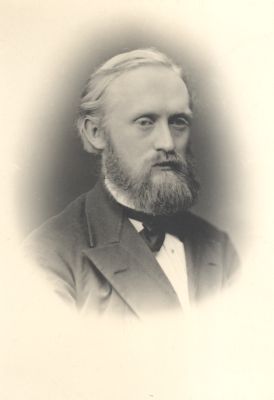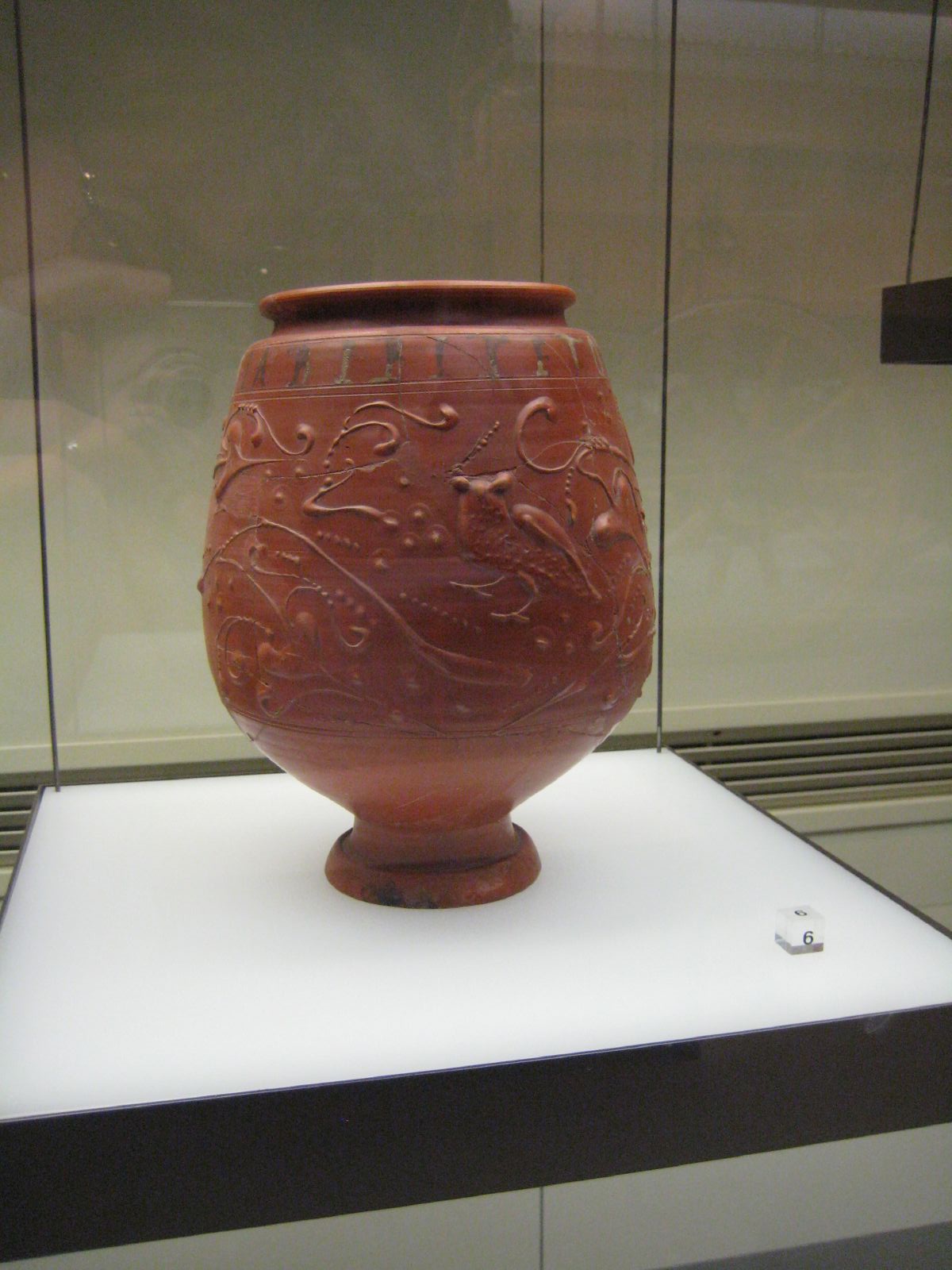|
Aliso (Roman Camp)
Aliso was a military and civilian colony in ancient Germany, built by the emperor Augustus near present-day Haltern am See, when he wanted to create the Roman province of Germania. After the Battle of the Teutoburg Forest in 9 AD, Aliso was the last point of resistance of the Roman troops in Germania. Besieged by the Germans under Arminius, the garrison commanded by the prefect Lucius Caedicius put up a fierce resistance before managing to escape and regain the Roman lines. Location The location of Aliso is the subject of various hypotheses. In 2010, the Archaeological Commission of Westphalia published a summary of excavations and discoveries near Haltern and concluded that the site corresponds to that described in ancient literature under the name of Aliso. At the southern and eastern gates of the main Roman camp at Haltern, palisades to reinforce the enclosure were discovered as well as remains of defensive armament and a mass grave which could indicate that an attack wa ... [...More Info...] [...Related Items...] OR: [Wikipedia] [Google] [Baidu] |
North Rhine-Westphalia
North Rhine-Westphalia (german: Nordrhein-Westfalen, ; li, Noordrien-Wesfale ; nds, Noordrhien-Westfalen; ksh, Noodrhing-Wäßßfaale), commonly shortened to NRW (), is a States of Germany, state (''Land'') in Western Germany. With more than 18 million inhabitants, it is the List of German states by population, most populous state of Germany. Apart from the city-states, it is also the List of German states by population density, most densely populated state in Germany. Covering an area of , it is the List of German states by area, fourth-largest German state by size. North Rhine-Westphalia features 30 of the 81 German municipalities with over 100,000 inhabitants, including Cologne (over 1 million), the state capital Düsseldorf, Dortmund and Essen (all about 600,000 inhabitants) and other cities predominantly located in the Rhine-Ruhr metropolitan area, the largest urban area in Germany and the fourth-largest on the European continent. The location of the Rhine-Ruhr at the h ... [...More Info...] [...Related Items...] OR: [Wikipedia] [Google] [Baidu] |
Recklinghausen
Recklinghausen (; Westphalian: ''Riäkelhusen'') is the northernmost city in the Ruhr-Area and the capital of the Recklinghausen district. It borders the rural Münsterland and is characterized by large fields and farms in the north and industry in the south. Recklinghausen is the 60th-largest city in Germany and the 22nd-largest city in North Rhine-Westphalia. History First mentioned in 1017 as ''Ricoldinchuson'', in 1150 the city was the center of the surrounding Vest Recklinghausen. In 1236, Recklinghausen received town privileges. There is record of Jews in the city as early as 1305. As part of the County of Vest, ownership of Recklinghausen changed several times in the 15th and 16th century, and in 1576, the entire county was pawned to the Elector of Cologne. In 1582–83, again in 1586, and again in 1587, the city was plundered by partisan armies during the Cologne War, a feud over religious parity in Electorate of Cologne and electoral influence in the Holy Roman Emp ... [...More Info...] [...Related Items...] OR: [Wikipedia] [Google] [Baidu] |
Haltern Am See
Haltern am See (''Haltern at the lake'', before December 2001 only Haltern) is a town and a municipality in the district of Recklinghausen, in North Rhine-Westphalia, Germany. It is situated on the Lippe and the Wesel–Datteln Canal, approx. north of Recklinghausen. The town is about north of Düsseldorf. History Former ''Halteren'' was founded on February 3 in 1289. They received the town charter by the prince-bishop of Münster, Everhard von Dienstag. During Kristallnacht (1938), the town's synagogue, Jewish cemetery and the houses and shops belonging to the town's Jews were vandalised. Jews were deported to concentration camps, the last five of whom were deported in January 1942. Only one of the town's Jews survived the Holocaust: Alexander Lebenstein, after whom a school is named. In March 2015, the town received international attention when 16 students and two teachers from the Joseph-König-Gymnasium in Haltern, were killed in the Germanwings Flight 9525 crash in the Fr ... [...More Info...] [...Related Items...] OR: [Wikipedia] [Google] [Baidu] |
Augustus
Caesar Augustus (born Gaius Octavius; 23 September 63 BC – 19 August AD 14), also known as Octavian, was the first Roman emperor; he reigned from 27 BC until his death in AD 14. He is known for being the founder of the Roman Principate, which is the first phase of the Roman Empire, and Augustus is considered one of the greatest leaders in human history. The reign of Augustus initiated an imperial cult as well as an era associated with imperial peace, the ''Pax Romana'' or ''Pax Augusta''. The Roman world was largely free from large-scale conflict for more than two centuries despite continuous wars of imperial expansion on the empire's frontiers and the year-long civil war known as the "Year of the Four Emperors" over the imperial succession. Originally named Gaius Octavius, he was born into an old and wealthy equestrian branch of the plebeian ''gens'' Octavia. His maternal great-uncle Julius Caesar was assassinated in 44 BC, and Octavius was named in Caesar' ... [...More Info...] [...Related Items...] OR: [Wikipedia] [Google] [Baidu] |
Germania
Germania ( ; ), also called Magna Germania (English: ''Great Germania''), Germania Libera (English: ''Free Germania''), or Germanic Barbaricum to distinguish it from the Roman province of the same name, was a large historical region in north-central Europe during the Roman era, which was associated by Roman authors with the Germanic peoples. The region stretched roughly from the Middle and Lower Rhine in the west to the Vistula in the east. It also extended as far south as the Upper and Middle Danube and Pannonia, and to the known parts of Scandinavia in the north. Archaeologically, these peoples correspond roughly to the Roman Iron Age of those regions. While apparently dominated by Germanic peoples, Magna Germania was also inhabited by Celts. The Latin name ''Germania'' means "land of the Germani", but the etymology of the name ''Germani'' itself is uncertain. During the Gallic Wars of the 1st century BC, the Roman general Julius Caesar encountered peoples originating from ... [...More Info...] [...Related Items...] OR: [Wikipedia] [Google] [Baidu] |
Battle Of The Teutoburg Forest
The Battle of the Teutoburg Forest, described as the Varian Disaster () by Ancient Rome, Roman historians, took place at modern Kalkriese in AD 9, when an alliance of Germanic peoples ambushed Roman legions and their auxiliaries, led by Publius Quinctilius Varus. The alliance was led by Arminius, a Germanic officer of Varus's auxilia. Arminius had acquired Roman citizenship and had received a Roman military education, which enabled him to deceive the Roman commander methodically and anticipate the Roman army's tactical responses. Teutoburg Forest is commonly seen as one of the most important defeats in Roman history, bringing the triumphant period of expansion under Augustus to an abrupt end. The outcome of this battle dissuaded the Romans from their ambition of conquering Germania, and is thus considered one of the most important events in European history. The provinces of Germania Superior and Germania Inferior, sometimes collectively referred to as ''Roman Germania'', were s ... [...More Info...] [...Related Items...] OR: [Wikipedia] [Google] [Baidu] |
Arminius
Arminius ( 18/17 BC – 21 AD) was a chieftain of the Germanic Cherusci tribe who is best known for commanding an alliance of Germanic tribes at the Battle of the Teutoburg Forest in 9 AD, in which three Roman legions under the command of general Publius Quinctilius Varus were destroyed. His victory at Teutoburg Forest would precipitate the Roman Empire's permanent strategic withdrawal from Germania Magna. Modern historians have regarded Arminius' victory as one of Rome's greatest defeats. As it prevented the Romanization of Germanic peoples east of the Rhine, it has also been considered one of the most decisive battles in history and a turning point in human history. Born a prince of the Cherusci tribe, Arminius was part of the Roman friendly faction of the tribe. He learned Latin and served in the Roman military, which gained him Roman citizenship and the rank of ''eques''. After serving with distinction in the Great Illyrian Revolt, he was sent to Germania to aid the loc ... [...More Info...] [...Related Items...] OR: [Wikipedia] [Google] [Baidu] |
Terra Sigillata
Terra sigillata is a term with at least three distinct meanings: as a description of medieval medicinal earth; in archaeology, as a general term for some of the fine red Ancient Roman pottery with glossy surface slips made in specific areas of the Roman Empire; and more recently, as a description of a contemporary studio pottery technique supposedly inspired by ancient pottery. Usually roughly translated as 'sealed earth', the meaning of 'terra sigillata' is 'clay bearing little images' (Latin ''sigilla''), not 'clay with a sealed (impervious) surface'. The archaeological term is applied, however, to plain-surfaced pots as well as those decorated with figures in relief. Terra sigillata as an archaeological term refers chiefly to a specific type of plain and decorated tableware made in Italy and in Gaul (France and the Rhineland) during the Roman Empire. These vessels have glossy surface slips ranging from a soft lustre to a brilliant glaze-like shine, in a characteristic colou ... [...More Info...] [...Related Items...] OR: [Wikipedia] [Google] [Baidu] |
Georg Loeschcke
Georg Loeschcke (28 June 1852 – 26 November 1915) was a German archaeologist born in Penig, Saxony. He studied archaeology under Johannes Overbeck at Leipzig, afterwards continuing his education at the University of Bonn, where he was a student of Reinhard Kekulé von Stradonitz. In 1877–78 he participated in a study trip to Greece and Italy under the aegis of the Deutsches Archäologisches Institut. As a result of this research, he published with Adolf Furtwängler, ''Mykenische Thongefäße'', a landmark work that provided important historical timelines for Mycenaean pottery. In their investigations of Mycenaean pottery, Loeschcke and Furtwängler gave distinctions between it and Geometric pottery. A Biographical Dictionary of Historic Scholars, Museum Professionals and Academic Historians of Ar ... [...More Info...] [...Related Items...] OR: [Wikipedia] [Google] [Baidu] |
Terra Sigillata
Terra sigillata is a term with at least three distinct meanings: as a description of medieval medicinal earth; in archaeology, as a general term for some of the fine red Ancient Roman pottery with glossy surface slips made in specific areas of the Roman Empire; and more recently, as a description of a contemporary studio pottery technique supposedly inspired by ancient pottery. Usually roughly translated as 'sealed earth', the meaning of 'terra sigillata' is 'clay bearing little images' (Latin ''sigilla''), not 'clay with a sealed (impervious) surface'. The archaeological term is applied, however, to plain-surfaced pots as well as those decorated with figures in relief. Terra sigillata as an archaeological term refers chiefly to a specific type of plain and decorated tableware made in Italy and in Gaul (France and the Rhineland) during the Roman Empire. These vessels have glossy surface slips ranging from a soft lustre to a brilliant glaze-like shine, in a characteristic colou ... [...More Info...] [...Related Items...] OR: [Wikipedia] [Google] [Baidu] |
.jpg)





